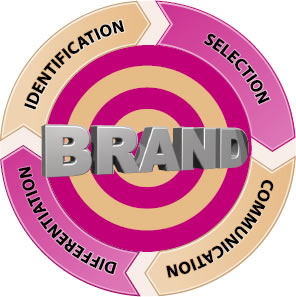Three Reasons Why Email Is Still Relevant
Posted on Tuesday, April 7th, 2015
If you have an email list of current and potential customers, are you using it effectively? Many experts believe the email list is a businesses greatest resource because it provides a way to connect with a targeted audience who wants to hear from you. If your business is using email marketing, do you understand the pros and cons of email marketing and have you developed a strategy to accomplish specific business results from your email list?

Email marketing is more than sending and receiving email. It can be a fundamental shift in how business approaches marketing. Here are three reasons why you should leverage your email list.
- Targeted Audience. Email marketing helps businesses deliver a specific message to a targeted audience while measuring the effectiveness of the content and understanding the bottom line impact. With email marketing, you chose who receives your email and speak directly to a group who wants to hear from you and what you have to offer. Email marketing allows you to share new products and services, content and stay connected to your customers.
- Cost Effective. Businesses are always looking for the greatest ROI from marketing dollars. Compared to traditional media and social media advertising, email marketing is cheap. You can track who opens the email, what actions are taken and retarget a customer based on their email behavior. Email allows your customers to interact with you at a time that is convenient and you can measure customer behavior and make modifications to your email campaigns in real time.
- Lead Generation. Decide when you want to create email campaigns. Consistent and relevant messages will keep your brand top-of-mind when your customers are ready to seek information or make a purchase. Email campaigns should be designed to move customers through a sales funnel while leveraging content and an offer to generate revenue.
Email marketing is highly effective, engaging and relevant. Your business must determine how to utilize email marketing as an effective tactic to reach your business goals.
Five Ways to Value Your Customers
Posted on Wednesday, March 25th, 2015
 Many businesses believe they value customers because of the products and services offered and positive feedback received. When asked what is the most important aspect of your business, how do you rank your customers? What are you doing to stay engaged with your customers? Do your customers really feel appreciated?
Many businesses believe they value customers because of the products and services offered and positive feedback received. When asked what is the most important aspect of your business, how do you rank your customers? What are you doing to stay engaged with your customers? Do your customers really feel appreciated?
1. Be Authentic
Show your customers how you value their business and that you are committed to serving them. At every customer touch point, ask your customers are you addressing their needs, what can you do to serve them better and communicate that you are committed to helping them achieve their goals. Serve your customers from the heart; tell the truth and share your vision, which is essential to being authentic.
2. Take Time Off
Managing a business properly is a large undertaking. Business owners require organization, focus and commitment to serve customers on a daily basis. All business owners require downtime to re-energize and taking time off is a necessity, not a luxury. Time off allows you to hit the reset button and remain committed to your business mission. Educate your clients on your availability and stress your commitment to them. Implement systems that allow you to service your customers in a timely manner.
3. Get Help and Support
No one is an expert at every aspect of managing a business. Learn to focus on what you do well and consider getting help to manage the tasks you don’t enjoy and may take time away from growing your business. For example, if you don’t enjoy bookkeeping or administrative tasks, consider hiring an assistant. Remember that in order for us to be most effective, it may require asking for help from time to time.
4. Learn New Skills
To remain competitive and relevant in any industry, you must learn new skills. Business owners and entrepreneurs must constantly challenge themselves to offer products and services that are more effective while providing incremental value and service. Small business owners, with their intimate knowledge of their customers, are well positioned to innovate and learn new skills which can lead to offering additional services, better customer service and creating new and sustained revenue streams.
5. Tap Into Your Vision
How do you visualize the success of your business? What inspires the strategic direction of the products and services you will offer in years to come? What do you ultimately want your business to achieve? Your vision enables you to focus on what is important, properly allocate your resources to accomplish your vision and develop a roadmap, which outlines the path to your vision.
Your customers are your most valuable asset. Always show them how much you value their business.
5 Ways to Maintain An Authentic Brand
Posted on Tuesday, March 3rd, 2015
What does it mean for your brand to be authentic? Why is brand authenticity important? Why should you care if your brand is perceived as authentic?

Brand authenticity if fulfilling your brand promise at every customer touch point at every interaction with a brand on a consistent basis. In short, brand authenticity can be summed us as practicing what you preach. An authentic brand is trustworthy and faithful to its core mission and has a higher objective beyond profits.
If our brands are the foundation of our business, there should never be a question about how to live as an authentic brand. As a business owner, it is imperative to resist external forces, short cuts and quick fixes as we establish and manage our brand.
Here are five ways to maintain the authenticity of your brand?
- Clearly Define Your Brand
What is your brand’s promise and is your brand promise relevant to your customers? How do you execute your brand’s promise during business transactions? Does your brand represent the ideas and vision for your business?
As a business owner, you must define your brand or others will do it for you. Your customers, competitors and everyone else you will talk about your brand. It is important to lead, engage and manage the conversation about your brand. An authentic brand is purpose driven and motivated to serve its customers with excellence.
- Believe In What You Are Doing
The culture you create for your brand is important to how you will live your brand’s promise. Build and nurture your brand’s culture based on your ideals, beliefs, and vision. Conduct business with people who share a common purpose, who value your brand’s promise and who are passionate about your business.
Try not to embrace ideas, customers and opportunities that do not align with your brand. While it is important to generate revenue, make profits and build your brand, comprising your brand will not benefit you in the short or long-term. Remember, to thine own brand, be true.
- Constantly Tell Your Story
In the book, “Start With Why: How Great Leaders Inspire Everyone To Take Action”, Simon Sinek states, “People don’t buy what you do; they buy why you do it. And what you do simply proves what you believe.” What you believe is why you started your business and how you will solve your customers’ problems and provide solutions is foundational to your brand. Your story is always relevant to your customers and they want to connect with you in unique ways. Your store is the differentiator between you and your competitors.
- Create Friends, Not Customers
Customers require emotion, authenticity and loyalty from companies. In order for brands to thrive, customers require authentic relationships. When your brand creates friends instead of customers, a community of brand ambassadors is created. Your brand ambassadors will spread your brand’s message effectively and often. Friends will believe in what your brand is doing. The relationship with a friend goes beyond transactions and develops into lasting, reciprocal ways that can be mutually beneficial for all parties. When friends trust your brand, they do not hesitate to do what is right for your business and challenge you to serve as role models for them as well as other brands.
- Innovate and Inspire
Customers are looking for brands to develop, implement and communicate new solutions to new problems and inspire customers to change their paradigms about existing problems while utilizing new solutions. An authentic brand is a catalyst for change and should be excited about discovering and developing new ways to service customers. Innovation is not only a competitive advantage for brands, but also fosters leadership with customers. When brands innovate, they can position themselves as industry leaders and serve as experts.
An authentic brand is a necessity to survive, grow and remain relevant.
3 Reasons to Actively Manage Your Brand In A Social Media Era

If you are not actively managing your brand, your sales could be impacted because current and potential customers are seeking ways to engage with your brand. In the era of Social Media, opportunities to connect with your customers are more abundant and properly managing your brand is critical to your success.
- Your Community
Customers—past, current and potential- want to form authentic relationships beyond transactional interactions. Leverage your community by providing advice, recommendations, tips and any relevant knowledge that can add value and position you as an expert. Understand why giving more value is providing the best customer service, the right thing to do and establishes essential characteristics of your brand.
Social media is an amazing platform to share content that engages your community and keeps your brand top of mind. Your content should be centered around the customer, not your products and services. Striking a balance of service, sales and promotion should be understood and fundamental for your brand.
- Establish Your Online Presence
Determine what you want for your brand online. Do you want to drive traffic to your website or to your physical property? Do you want to use social media for your brand? Are you interested in driving brand awareness to let your customers know you exist or are you interested in generating leads, managing customers, or having an online presence because everyone else does?
If you have an online presence, your brand should be on the first page of Google if someone searches for your business. Your brand’s presence on Facebook, Twitter, Instagram, LinkedIn or whatever social media platforms you should be part of your search results. Creating and managing your social media profiles using your brand name allows you to take more ownership of how your brand is managed online, control conversations about your brand, interact with your audience online and respond to customer inquires and feedback.
If you don’t have an online presence, you are missing an opportunity to engage with your audience.
- Be Human
Customers expect brands to be responsive and transparent. Customers buy into you before they buy into your brand. Your brand’s personality should be felt in all customer interactions. Ensure you are brand message is consistent in all interactions. Also, responding to customers has always been important and is even more critical in a social media era. Customers don’t expect brands to be perfect; however, they do expect brands to have compassion which means developing and nurturing relationships is essential for survival.
Four Essential Steps to Better Understand Your Hair Salon Clients
Posted on Tuesday, January 6th, 2015
Hair stylists and hair salon owners wear multiple hats for their clients ranging from beauty consultant, career and family advisor, confidant and most important-hair expert/guru, just to name a few. However, the ultimate goal is to know your clients so well that you can anticipate their hair styling, hair maintenance requirements and beauty needs while exceeding their expectations.

Here are four ways to know your customers better and grow your business.
1. Who Are Your Best Clients
________________________________________
People who utilize hair stylists, are hair involved and who frequent hair salons have hundreds of resources and tools that are immediately accessible for their hair styling needs. As a result, your clients can be less loyal and do-it-yourselfers. Social media has given your clients the power to rethink their purchase decisions and now they have many hair resources that are easily accessible that were once only available for licensed professional hair stylists. Hair clients have also become more diverse, have more expertise about hair styling options, and are product experts because digital marketing has begun to amplify niche hair communities. So, successful hair stylists who seek to remain relevant and grow their clientele and make more money must understand what clients require to keep them engaged and loyal.
Understanding your clients hair styling, hair care and beauty needs, what motivates them, who influences them and other relevant data that impacts their lifestyle is key. For example, when determining what types of services or products to offer, ask yourself as many relevant questions about your clients as possible. Do your clients like to try products? How often do your clients want a new hair cut or hairstyle? Do they have children? Are they familiar with the latest hair styling trends? What type of careers do they have? Do they own a home? Define them in multiple ways to understand their problems and address their issues.
Here are a few examples:
• A single woman from New York in her early twenties who grew up getting her hair cut and colored every six weeks now wants a style that can be maintained once every three months.
• A single mother in her mid thirties with three children, living in Chicago, who visited the salon once a week is now unemployed. The weekly salon visit was her only treat to herself and hair is the most important aspect of her style.
• A married mother of three in Richmond that is a stay-at-home parent recently got her first professional hair cut and her family income is $60,000 per year. The mother wants to keep her fresh, modern day look.
2. What Do Your Clients Care About
________________________________________
Understanding your hair salon clients’ most pressing issues, problems and desires is essential to your business success. Each person in your client base has a specific want or need and are naturally receptive to consuming information that helps meet their challenges.
Clients look for hairstyles as a way to define their style, to highlight their uniqueness and compliment their beauty.
By understanding what your clients care about, you can start creating services, products and content to meet their needs. As clients begin to engage your expertise, you can develop a deeper understanding of their hair challenges and opportunities that impact their lives. With this inquiry and engagement, you also can recognize the interactions and motivations of your best clients.
Once you have this information, you can begin creating more services, content and products that attracts your ideal customer.
3. How Do Clients Perceive Your Business
________________________________________
Understanding client perception is as important as knowing who your clients are. One way to measure perception is to conduct a survey to gain valuable insight and feedback. This is particularly important as it allows your business to adjust to the feedback and compensate for where it falls short.
Building and leveraging your presence online is a great way to gain valuable real-time insight of customer sentiment. If you want to see how your clients are responding to your services, products, recommendations, feedback and noise measurement can give you a warning before your sales and profits are negatively impacted. Without knowing how your clients perceive your business, you will miss complaints and wonder why customers are taking their business to your competitors or seeking other options for their hair styling and beauty needs. Unless you continuously attempt to get valuable feedback, you may never discover where you are going wrong.
Learn to you use online and offline activities to effectively communicate your story that resonates with your client base and increases your influence in your community and beyond.
4. What is the clients’ hair journey?
_______________________________________
How do your clients feel about their hair? Because this is not a one-size-fits all answer, you must know each client’s unique needs and desires.
Where do you fit in your clients’ hair journey? Are you an expert? A partner? A consultant? Service provider? Evaluate and assess how your clients interact with your business. How do your clients contact you? How frequently do you interact? Have you discussed goals regarding your clients’ hair, styling or beauty needs?
Are client transactions with your business seamless? Is your clients’ experience amazing every time they are in contact with your business? Will your clients refer you to friends and family? Will they write a positive review for you without you requesting it?
It is important to review your clients’ journeys at least once a year. Consider new ways and platforms to improve your client’s hair journey and decrease the resources needed to maintain your sales and marketing functions.
In closing, the lack of client understanding makes it difficult for your hair salon and hair styling business to effectively meet the needs of current and future clients. Clients are less loyal and far less trusting than they used to be and social media has given them the power to rethink their purchase decisions. So, if you don’t understand your clients how can you possibly deliver the types of experiences they desire?
Why Offering Discounts May Not Be A Good Idea to Grow Your Business
By Jennifer Ellis-Jackson
Simple Mantra Marketing LLC
Everyone loves and looks forward to a great deal. Many of us enjoy coupons; receiving an additional percentage off on a purchase or a having a discount code before we make an online purchase. We enjoy free shipping, Buy One, Get One Free offers and let’s face it—anything that says or implies we are saving money and getting a good price.
What Motivates Consumers
Some of us only shop during sales—One Day Sales, Back To School Sales, Black Friday, Cyber Monday, and the list goes on and on. We experience sales at a variety of venues—brick and mortar stores, online stores, direct sales, etc. We negotiate prices and inquiry about discounts during various sales transactions to ensure we are receiving a good deal. There is a sense of pride when we believe we struck a deal that will benefit us. However, discounts, sales and price reductions can often suggest the product or service was not properly priced from the onset.

Pricing Considerations
As business owners, we place a monetary value on the products and services we offer. Careful consideration goes into our pricing decisions using a variety of variables including customer service, industry expertise, marketing, sales, systems, suppliers, etc. Many of us are questioned and challenged about our prices often because our customers and prospective customers are seeking a deal.
What message are we sending when we discount our prices? Are we sending a message at all? Discounts can allow us to drive short-term traffic, reach more potential clients and spike sales and engagement. The flip side to offering discounts are less profits, risk of being positioned as a value brand and enticing customers who only shop on a deal.
Offering Value
Instead of offering discounts, we could consider providing more value like offering complimentary products or services, bonus offers or special features for upcoming product or service launches.
For a new business, it is critical to establish your brand, offering and expertise in your industry. Once you have a firm customer base, community and credibility, seek a variety of ways that may includes discounts to drive your business. Try not to get caught in the spiral of offering discounts without establishing your true value in the your industry.
Four Things Every Business Owner Should Always Know

Like most business owners, the majority of your work day is spent servicing clients, reviewing sales, preparing for appointments and attending to the day-to-day operations of managing your business. During my client interactions and meetings, I am fascinated with the number of businesses that do not full fully comprehend the actual and real costs of operating their business. Here are four essential things every business owner should know.
1. Gross profit equals revenue minus cost of goods sold or services delivered. Gross profit is impacted by everything from marketing to sales to delivery of goods or services. These costs represent the core functions of your business required to service your customers. For example, sales are the revenues received when a good or service is provided. Cost of goods or cost to service will vary by industry. Exclude office expenses, salaries, payroll taxes, advertising, marketing or sales expenses, rent, etc. in cost of goods. Knowing your gross profit will ensure you understand your financial health.
2. Income to Expense Ratio is calculated by dividing the total operating expenses by revenues. Understanding what it costs to operate your business compared to the income that the business generates is essential to ensure your long-term survival. One good practice is to compare all buckets of expenses, such as marketing, sales, administrative, utilities, insurance, taxes and maintenance, to the gross operating income to understand what is highest and lowest contributor to expenses.
3. Customer Acquisition Cost-How much does it cost to acquire a new customer. How much money do you spend on online and offline sales and marketing? If you print brochures, attend events to get leads and sales, run ads online and offline, market via email campaigns, have a lead capture on your website then all these costs should be factored into your customer acquisition costs. To compute the customer acquisition cost, take your entire cost of sales and marketing over a given period, including salaries and other headcount related expenses, and divide it by the number of customers that you acquired in that period. As a part of your marketing planning, fully comprehend your customer acquisition cost. Many businesses fail because they are not aware of how much it actually costs them to turn a prospect into a customer.
4. Lifetime Customer Value is the amount of gross revenue expected to be earned from each customer over a specific time period. This calculation should factor in all costs for supporting your product or services along with the cost of goods sold. Each business should know how much revenue is generated from each customer. The key here is to be able to track repeat business, and to know how much each customer averages over the lifetime of the relationship. One quick way to remember the Lifetime Customer Value is the net profit divided by number of clients over a given period. It seems self-explanatory that each business should have a grasp on true costs; however, it never hurts to have a refresher. Spend time evaluating and reviewing the costs to manage your business.
Three Goals Essential to Growing Your Business
After my first layoff in corporate America, I envisioned starting my own business. Fourteen years later, I said, “I’m out” and put the wheels in motion to become “Boss Free.” While it was an exciting time, there were many things that I thought would be easy became overwhelming because I operated from ego and intellectualism instead of passion, commitment and empowerment.
While developing my logo, my website, my business cards, my tagline and business strategies, I also spent hours wishing the business success others experienced were mine instead of focusing on establishing my business which was an epic failure. I wasted hours trying to convince others I was credible, knew what I was doing and could be successful as a business owner. I drove around, hosted meetings and networked instead of following my game plan.
My first year lacked direction and was rough. I am a firm believer there are no coincidences; however, there are three mistakes I pray every business owner avoids.
Don’t jump and say YES to every opportunity.
Remain true to your core principles. I had nothing when I started my business. After paying for the essentials, I was severely underfunded. I was crystal clear on my mission and vision; however, I didn’t have the confidence to make things happen. Since I needed money immediately, I began consulting again and neglected building my business for nine months. I became comfortable consulting in corporate because I was making money. I started resenting my corporate client because I had a “job” and did none of the things that were critical to building my business.
I decided to recommit to my business and parted ways with my corporate client. I reconnected to my passion of helping businesses. My fears were exacerbated because I was not working my business plan and focused on what others were doing. When business opportunities began to materialize, I operated with ease and felt I no longer had to say YES to opportunities that did not serve my business or my clients.
Focus only one income producing activities.
As entrepreneurs and solopreneurs, we are responsible for all aspects of our business. While it is critical to stay organized, look and sound good to our customers, spend 90% of your time on income producing activities.
It is essential that you build relationships with your customers. You must also grow your email list. Network with purpose. Develop and stay committed to your brand. Build credibility and master the art of selling. If you don’t focus on income producing activities, you’re going to delay achieving your ultimate business goals.
Turn Your Prospects and Fans into Customers
I realized quickly that products and services are commodities. Your customers chose your business because of three things: Your Brand, Your Content and Your Mastery of Selling.
Your Brand: Knowing what your brand represents, why it exists, and what customers you seek to serve will differentiate your brand. Clearly defining and consistently messaging your brand’s promise is essential to your business’ success. Consistent branding activity and engagement must become second nature to you.
Your Content: Developing a content strategy and determining what content to create will take some time. To build authority and keep your audience coming back, your content must provide significant value. Once you have solidified, tested and refined your content strategy, your prospects and email list will grow and other opportunities such as blogging, speaking engagements and interviews may come to you.
Your Mastery of Selling: I abhor selling. I use to avoid every opportunity that it presented itself. When it came time for me to close a sale, I would feel nauseous and would discount all my products and services to make myself feel better. With some help from my mentors and business coaches, I soon realized that if I believed in my programs and knew I offered a solution my customers required, my work would make my customers’ businesses grow and thrive.

Three Ways to Stay Engaged with Your Brand
We all know that our brand and our business are separate but equal and one in the same. Without our business, there would be no brand and vice versa. When we focus exclusively on one and neglect the other, both could and usually suffer. The good news is that we can always re-engage, reignite and stay recommit to our brand.
As a business owner, you must commit to branding with ease which requires you to engage in a way that is purposeful, responsible and remain passionate to ensure your long-term success. Remember why you started your business and created your brand. Remember that your brand promise and how you strive to exceed your customers’ expectation is essential to your growth and making more money. Never forget your business and your brand is the conduit for what you offer to your customers. Finally, your brand is a part of you that you have birthed and you’re nurturing it to see its growth.
Don’t forget that your brand is the reason you wake up everyday and dedicate the time, focus and attention to your business deserves. Your clients come to your for your expertise; however, most importantly, because of the connection they share with you.
Remember the following:
Stay passionate about your brand.
- Your commitment to your core values and beliefs.
- What is your brand promise.
- What is your why for your business.
- Be of service to your customers.
Enjoy the ride.
- Always remain energized and excited about your brand.
- Challenge yourself at each customer interaction to get better to grow and evolve your brand.
- Have fun with your brand, stay focused on your business, but don’t become consumed with that you cannot control. Remember that your biggest competitor is the person in the mirror.
Commitment to customers.
- In the beauty industry, your job is one of transformation, reinvention and refinement.
- You are often a therapist, counselor, confidante and friend to your clients.
- Stay positive and remain committed to serving your clients every need.

Why Branding?

When I ask many small business owners, entrepreneurs, solopreneurs and anyone establishing and building a brand, what their brand represents, I am often told what products or services the business provides. It often takes several probing questions to begin to understand what a specific brand represents.
Why is branding so challenging for us? What makes a brand unique? Why is branding necessary? To truly understand your brand, you must first clearly articulate and understand your “Why?” What was the primary reason behind your brand? Your brand must represent the customer engagement and customer experience at every touchpoint within your business. Whether your provide a product, service, your brand must exceed represent your values, beliefs and reason for being. Also, think about what is the personality of your brand, how your brand will be identified and how your customers will differentiate your brand.
As you develop, define and refine your brand, think about these five things:
1. What is your brand promise?
2. How do you want your customers and competitors to perceive your brand?
3. What should customers expect from your brand?
4. What is your brand’s personality?
5. How will your customers identify your brand?








